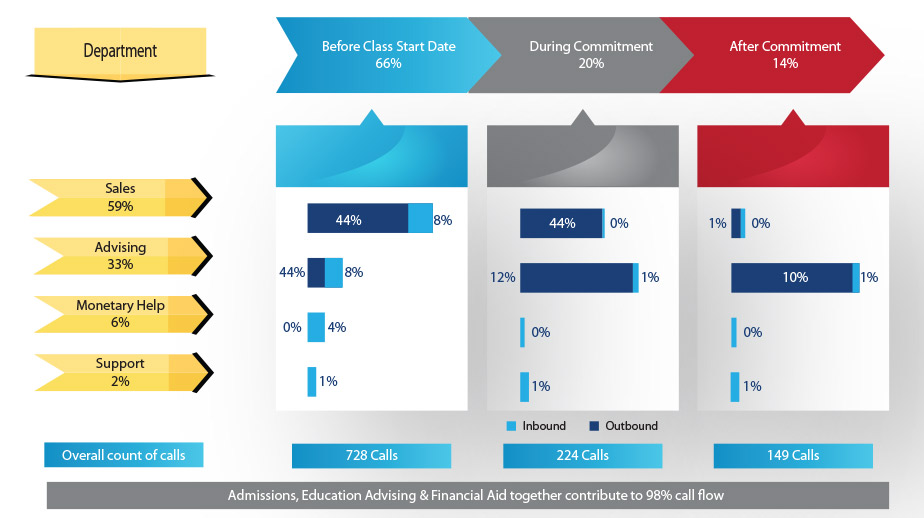This case study is on how our team helped a leading US based online university reduce their student attrition significantly by setting up processes to identify and capture verbal clues on real-time basis.
Student retention is an essential factor in all marketing teams’ strategy as there’s no point in acquiring new business if your current ones are leaving you. See how some of our fine clients have best gone about retaining students.
Table of Contents
Business Challenge
A major US based online university offering one of the largest numbers of programs & courses, and unique online opportunities approached MK to study their student lifecycle and highlight opportunities to retain a student and improve her/his stickiness to institution.
Keeping the students engaged on their online educational environment is a challenge whereas without an engaging experience, retention and participation are sure to drop. They needed to be aware of all the capabilities of the online environment as well as know how to use and locate the items that matter most to them.
Project Objective
With the aim to achieve the following:
- To understand the reason/reasons ‘Why students are leaving?’
- To check if agents are trying to retain students
- To analyze students behavior patterns leading to a transition from being highly engaged to less engaged
Our Approach
The project was guided by the following set of broadly stated research objectives:
- Evaluate all calls in 100 students’ life cycle the day they started using the service to the day they decided to withdraw the service
- Detailed call listening and documentation to establish drivers for withdrawing the service
- Capture student’s verbal cues and behavior to recognize the possible service withdrawal
- Study agent’s documents on students account to check if agents are leaving complete student case to help organization to understand the student profile completely
Our Solution
Student who dropped out due to inadequate service during University’s commitment period of 21 days were studied throughout their life cycle with organization.

It was observed that student’s engagement was getting low over the period as most of the interactions were captured only at the initial period when students signed up for service
The identified sample was further analyzed by group of analysts by performing detailed call listening and attributes like call driver, verbal cues and resolution offered were captured.
Initial Findings
After analyzing the sample it was found that 82% students indicated some verbal cues related to withdrawal due to bad service, most of the verbal cues shared by students were ‘personal’ in nature

Advisor’s approach on hearing a verbal clue from student:


Most number of verbal clues with shared with Admissions function since it is the first and primary point of contact for student. Agents understood and acknowledged the student’s verbal cues; however, failed to discuss the issues in detail as most of the agents only acknowledge the concern by discussing briefly or simply gave verbal nodding/empathized when required.
Results Achieved
We offered recommendations that enabled the client to:
- Develop a process to identify and capture verbal clues on real time basis,
- Design specific probing questions upon receiving verbal clue(s) to understand root cause of cancellation followed by suggesting an alternate approach to student,
- Prioritize features of programs and courses on which advisors would educate the student in much more effective manner,
- Generate options and alternate approaches those can be offered to student in order to continue relationship with the university.
These action items led to a statistically significant reduction in student attrition and the whole study was well received by the executives of quality & training.



